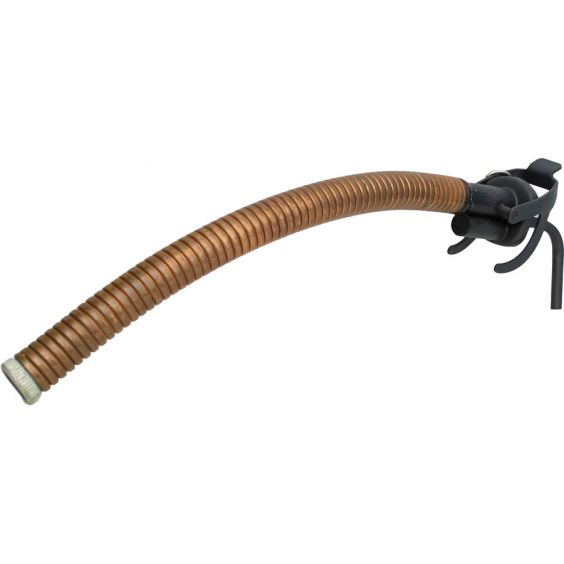Why not use something like a Jerry Can?
As discussed the tried and true Jerry Can and newer RotoPax system provide an inexpensive and fairly easy way to carry the extra fuel needed on most overland and back country trips. However, there are some negative issues with this type of system, specifically:
- Jerry cans and RotoPax containers can be easily stolen if not carefully secured.
- It’s more difficult to secure the fuel even if the container is locked down.
- If carried on the roof rack, a common practice, they have the following potential problems;
- Raising the center of gravity by adding a lot of weight to the top of the vehicle (two full Jerry cans can easily add 80-90 pounds to the roof rack).
- If mounted upright they increase wind resistance and the cans are more vulnerable to overhead obstructions (i.e. tree limbs, rock overhangs, etc.)
- If laid down on the roof rack there is always the potential for fuel leaks, as the Jerry can filler openings are not always very dependable as far as the seals are concerned and the risk of gas leaking all over your vehicle is real.
- Getting too the fuel can be a bit of a hassle; undoing and then redoing straps and a full 5 gallon Jerry can typically weights around 40 pounds.
- If mounted on the back, commonly on a tire carrier system, they put the weight well behind the rear axle and are more vulnerable to damage in a rear-end collision.
Internal Auxiliary Fuel Tanks
An internal auxiliary fuel tank is a permanently mounted tank. These systems can directly, or indirectly, supply fuel to your engine, by switching between the main tank and the aux tank, or by pumping fuel from an aux tank into your main (typically factory) fuel tank.
The advantages of a true auxiliary fuel tank are security, the tanks cannot realistically be stolen and the fuel in them is no more vulnerable to theft than that in your stock tank. Using the fuel in the aux tank is typically a matter of turning a valve or flipping a switch, and the tanks are more protected, from damage or theft, than external Jerry cans or RotoPax type containers. A potential disadvantage is a tank like this may lower your ground clearance a little, you’ll want to check with the manufacturer to see if this will be an issue.
The Long Range America Jeep (and many other 4WD vehicle) tanks work in this fashion. In the Jeep Wrangler (2 or 4 door) the auxiliary tank is mounted under the body inside the frame rails, in front of the rear axle, and automatically fills when you fill the main tank. There is a gauge so you can tell how much fuel is in the aux tank and a pump switch so you can transfer fuel from the Long Range America auxiliary tank to your stock gas tank.
By using the factory gas tank your regular gas gauge works as do the air quality and vapor capture systems. Additionally the tank is protected by the frame of the vehicle providing a level of protection comparable to the factory tank. The Long Range America Jeep tank holds about 12 gallons giving the typical Jeep about 30 to 34 gallons of usable fuel and a significant increase in range.
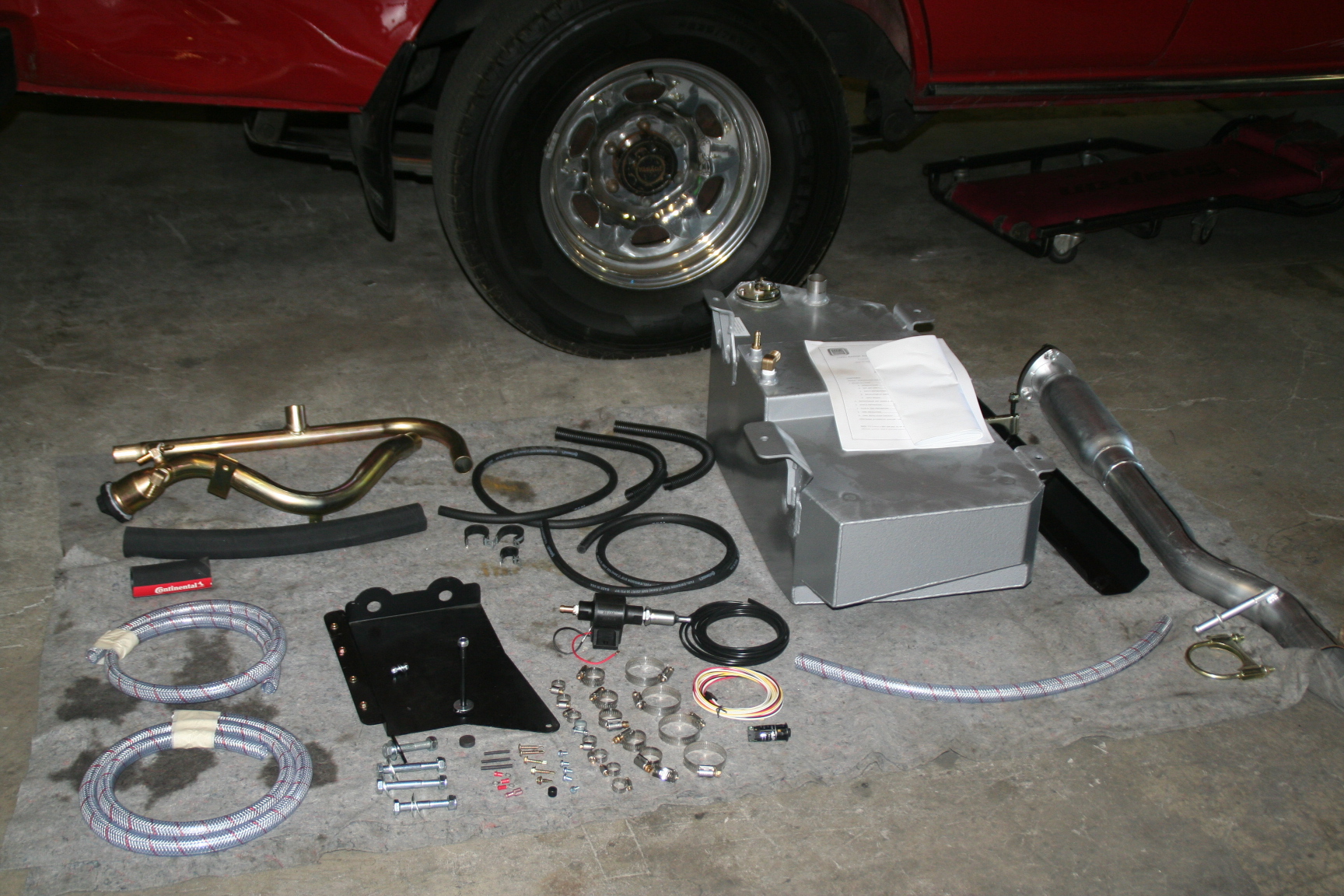
- Long Range America Jeep Parts.JPG (1003.43 KiB) Viewed 602 times
As you can see in the photo the tank comes as a kit and does require a knowledgeable person to install. The instructions are good but this is probably not for the shade tree mechanic. The tanks are made in Australia by certified craftsmen in a family-owned factory in its third decade of operation. The tank kit is not inexpensive, running about $2,100 but Long Range America does offer a 10% discount to vets and first responders.
If your vehicle has an under frame spare tire you may be able to relocate the spare to the rear of the vehicle and use that space for an auxiliary fuel tank. LRA has many options and you can check out their web site to see if they have something for your specific vehicle. For more information or to see if they have a system for your vehicle check out their web site at:
https://longrangeamerica.com/vehicle/je ... 2012-2018/
Permanently Mounted External fuel containers.
Another alternative to a temporary fuel can like a Jerry Can or RotoPax is a permanently mounted external fuel carrier. There are two that I know of, one made by AEV (American Expedition Vehicles) and another by Titan XXL Fuel Tanks. The AEV system is a very nice 10 gallon tank but only works with the AEV rear tire carrier and bumper. The Titan Tank system works with stock Jeep tire carriers as well as many third party aftermarket tire carriers.
AEV
As AEV notes on their web site (
https://www.aev-conversions.com/product/fuel-caddy/ ): “Made of tough cross-link polyethylene, the same materials as many factory fuel tanks, the ingenious design of AEV’s Fuel Caddy seamlessly integrates with the AEV Tire Carrier and takes full advantage of the unused space both inside the wheel of the spare tire and just behind it. The result is 10.2 gallons of secure and nearly invisible fuel storage. The high mounting position isolates the Fuel Caddy from trail impacts and makes it ideally suited for gravity fed deployment into the main tank. A fully vented, OE-quality cap means radical changes in elevation are no problem and fill-ups are fast. A built-in step allows for easy access to roof racks. Will accommodate up to a 37” tire.
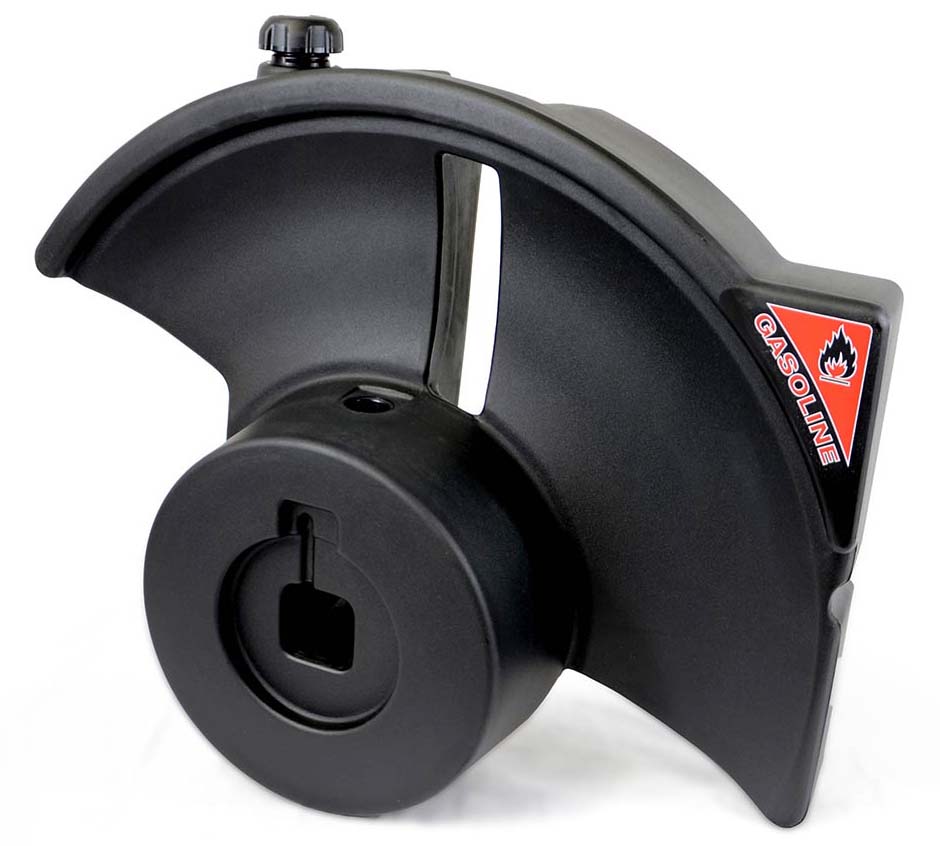
- AEV fuel tank.jpg (73.25 KiB) Viewed 602 times
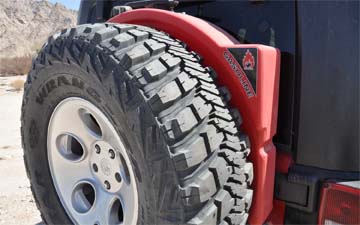
- AEV mounded.jpg (40.12 KiB) Viewed 602 times
KEY FEATURES:
• 10.2 gallons
• Cross-link polyethylene
• Fully vented OE-quality cap with large fill opening
• High mounting position isolates the Fuel Caddy from trail impacts
• Built-in foot step on upper right side allows easier access to roof racks
• Comes with a convenient shaker siphon for easy fuel retrieval
• PLEASE NOTE: INSTALLATION OF THE FUEL CADDY REQUIRES THE USE OF A 17″ WHEEL OR LARGER.
• AEV fuel Tank:
• 2007-2018 JK Wrangler with AEV Tire Carrier. Fitment: Wheels 17" and Larger ONLY 16" Will Not Fit.
• Manufactured In: United States
• FUEL CADDY PRICE $350.00”
Titan Fuel Tank
Another option for a permanently mounted external tank is make by Titan (
https://titanfueltanks.com/products/tra ... ii-4040287). The Titan tank will work with the stock Jeep rear tire mount and many 3rd party after market tire carrier systems. You should check with the factories excellent technical support people to see if the tank will fit your vehicle and tire carrier (800-728-4982). Titan makes a number of different fuel tanks for trucks as well as 4WD vehicles and they have mounts that fit 5” bolt stud patterns, as well as 6” and 8” wheels. The tank kit comes with high-strength steel bracketry, fasteners, and accessories for an easy DYI mounting on your vehicle. I’ve found that the tank mounting position keeps it out of the way and makes the transfer of fuel to the vehicle’s main tank, via the siphon provided, pretty easy. The Trail Trekker II™ will handle 15” and larger wheels, and tires up to 37”.
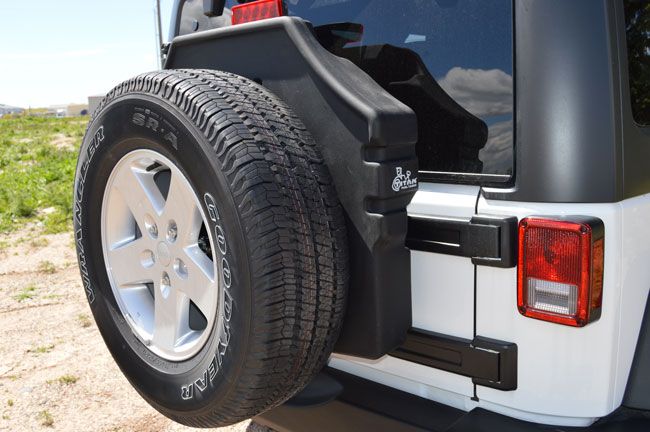
- Titan trail-trekker-2c.jpg (50.95 KiB) Viewed 602 times
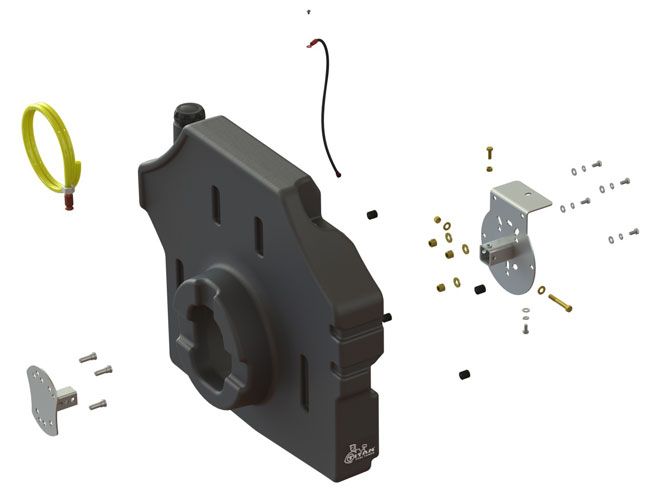
- titan trail-trekker-2e.jpg (17.82 KiB) Viewed 602 times
The tank is made from Military Grade, cross-Linked Polymer and is backed by a Lifetime Warranty. I used one of these tanks for over a year, sold it to a friend when I got the internal tank. My friend is still using Titan tank and finds it to be a tough, durable and secure system. The tank is fully grounded and vented with rollover protection and has the following features:
• 12 gallon capacity
• Fits all stock Jeep and many aftermarket tire carriers
• Models to fit 5, 6 and 8 lug patterns (Jeep, Toyota, etc.)
• Tank is fully grounded
• Lifetime Warranty
• FREE 2 gpm Shaker Siphon included and
• cost is about $400
Advantages of internal and fixed auxiliary fuel tanks
There are several real advantages the fuel storage systems described here have over Jerry Cans or RotoPax type systems.
- Range: In a Jeep you can realistically carry about 40 gallons of fuel (with both the LRA and AEV or Titan tanks combination), in a Land Cruiser 200 series it’s maybe 70 gallons. In a petrol powered Jeep you’ll probably get about 15 mpg in 2 or 4 wheel high and about 6-8 in 4 low. Figuring about 10 mpg average that’s still about 400 miles (650k) between fill-ups. With the new Jeep diesels which average say 20 mpg that’s 800 or more miles (roughly 1,300 kilometres). That kind of distance is getting to be real expedition level distances.
Security: As previously mentioned all these systems are much more protected from theft than externally stored Jerry cans or RotoPax systems.
Safety: While Jerry Cans and RotoPax systems are well made they are more vulnerable to damage and leakage in an accident or roll-over situation. Jerry Cans stored on the roof are extremely likely to be severally damaged in a full roll-over with a higher risk of fire or even explosion from broken cans and leaking gasoline and storing gasoline inside a vehicle is a really, really, bad idea for lots of reasons.
Costs: While the Long Range America tanks are expensive the ability to “stock-up” on less expensive fuel can make a big difference over time. For example in a Jeep with the LRA tank and an AEV or Titan tank you can hold approximately 40 gallons. Currently in LA fuel is about $3.50 to $4.00 per gallon. In Las Vegas you can get fuel for about $2.75 per gallon. Let’s say, on average, you can save $0.75 per gallon. For a 40 gallon fill that can be $30+. At remote gas stations fuel can be a lot more but putting that aside you can easily save $100 to $150 or more on any kind of longer distance trip. Over the life of the vehicle that can make a huge difference in total fuel costs.
Peace-of-mind: When we’re in the back country or even heading back to civilization and the fuel starts getting low it can pretty much dominate your thinking and greatly increase stress. Knowing you have the range you need to get where you need to go can help make the trip a lot more relaxing and enjoyable.
Caution and disclaimers for any external tank:
External types of tanks are intended for temporary storage only. When full an AEV or Titan tank weighs approximately 100 lbs (45 kg), check with the respective manufacturer for exact weight in your application. A single full 5 gallon Jerry can weights about 40 pounds. It is the user’s responsibility to ensure the mounting point(s) on the vehicle are sufficient for the weight. Remember dynamic loads can be much higher than the static load and the effective weight when bouncing around on a 4WD trip can easily be 50% or more greater than the static load.
Permanently mounted external tanks must be properly grounded at all times (see and follow installation instructions). When transferring fuel out of the tank always use a proper siphon pump. Never siphon fuel by mouth. Store only in a well ventilated area. Use out-doors only. Always wear eye protection when filling or transferring fuel in any type of external tank. In short ALWAYS treat any type of external fuel system with respect and caution. Especially gasoline fumes are very flammable and are harmful to breathe so only use in well ventilated areas under controlled conditions.
